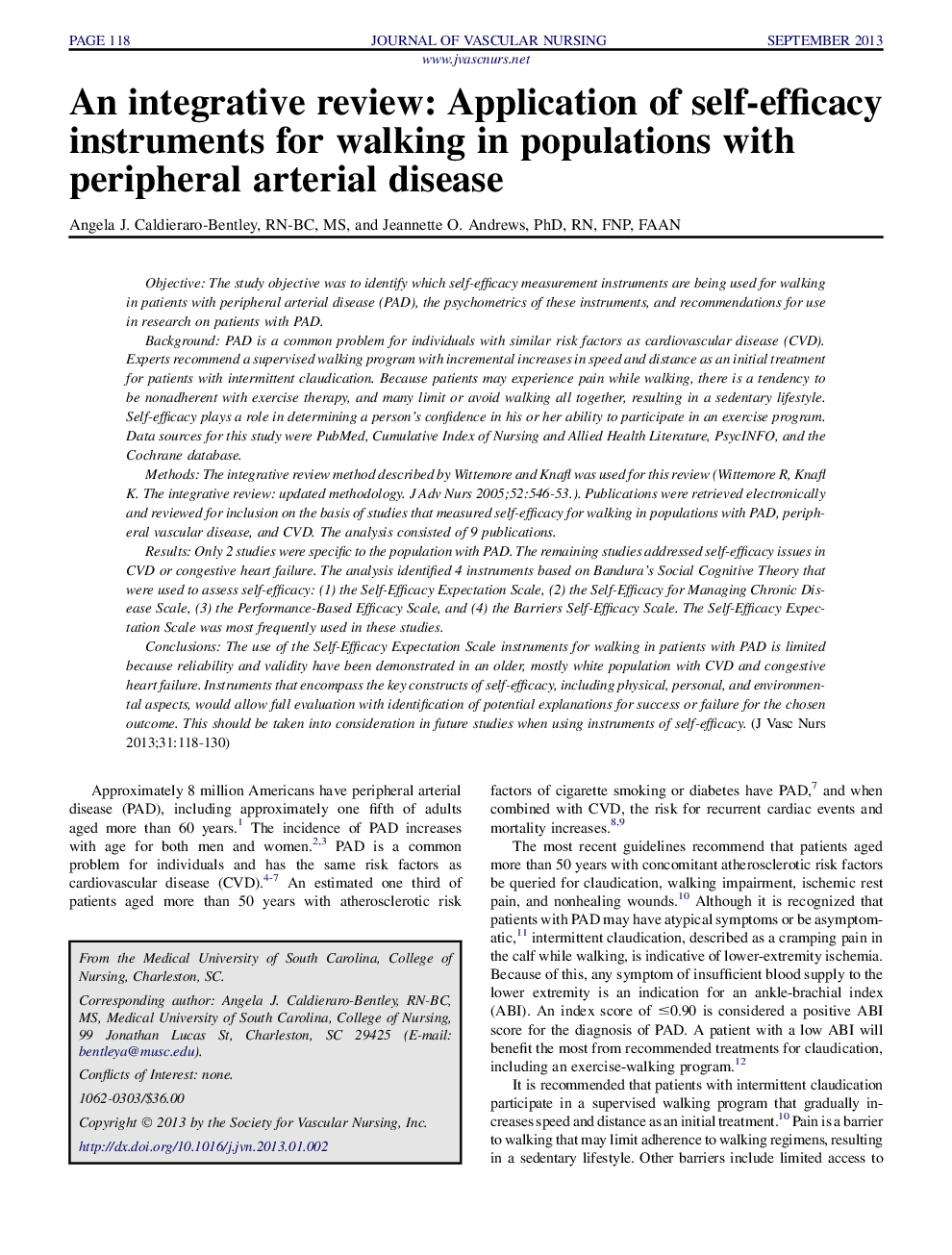| کد مقاله | کد نشریه | سال انتشار | مقاله انگلیسی | نسخه تمام متن |
|---|---|---|---|---|
| 2674787 | 1141735 | 2013 | 13 صفحه PDF | دانلود رایگان |

ObjectiveThe study objective was to identify which self-efficacy measurement instruments are being used for walking in patients with peripheral arterial disease (PAD), the psychometrics of these instruments, and recommendations for use in research on patients with PAD.BackgroundPAD is a common problem for individuals with similar risk factors as cardiovascular disease (CVD). Experts recommend a supervised walking program with incremental increases in speed and distance as an initial treatment for patients with intermittent claudication. Because patients may experience pain while walking, there is a tendency to be nonadherent with exercise therapy, and many limit or avoid walking all together, resulting in a sedentary lifestyle. Self-efficacy plays a role in determining a person’s confidence in his or her ability to participate in an exercise program. Data sources for this study were PubMed, Cumulative Index of Nursing and Allied Health Literature, PsycINFO, and the Cochrane database.MethodsThe integrative review method described by Wittemore and Knafl was used for this review (Wittemore R, Knafl K. The integrative review: updated methodology. J Adv Nurs 2005;52:546-53.). Publications were retrieved electronically and reviewed for inclusion on the basis of studies that measured self-efficacy for walking in populations with PAD, peripheral vascular disease, and CVD. The analysis consisted of 9 publications.ResultsOnly 2 studies were specific to the population with PAD. The remaining studies addressed self-efficacy issues in CVD or congestive heart failure. The analysis identified 4 instruments based on Bandura’s Social Cognitive Theory that were used to assess self-efficacy: (1) the Self-Efficacy Expectation Scale, (2) the Self-Efficacy for Managing Chronic Disease Scale, (3) the Performance-Based Efficacy Scale, and (4) the Barriers Self-Efficacy Scale. The Self-Efficacy Expectation Scale was most frequently used in these studies.ConclusionsThe use of the Self-Efficacy Expectation Scale instruments for walking in patients with PAD is limited because reliability and validity have been demonstrated in an older, mostly white population with CVD and congestive heart failure. Instruments that encompass the key constructs of self-efficacy, including physical, personal, and environmental aspects, would allow full evaluation with identification of potential explanations for success or failure for the chosen outcome. This should be taken into consideration in future studies when using instruments of self-efficacy.
Journal: Journal of Vascular Nursing - Volume 31, Issue 3, September 2013, Pages 118–130